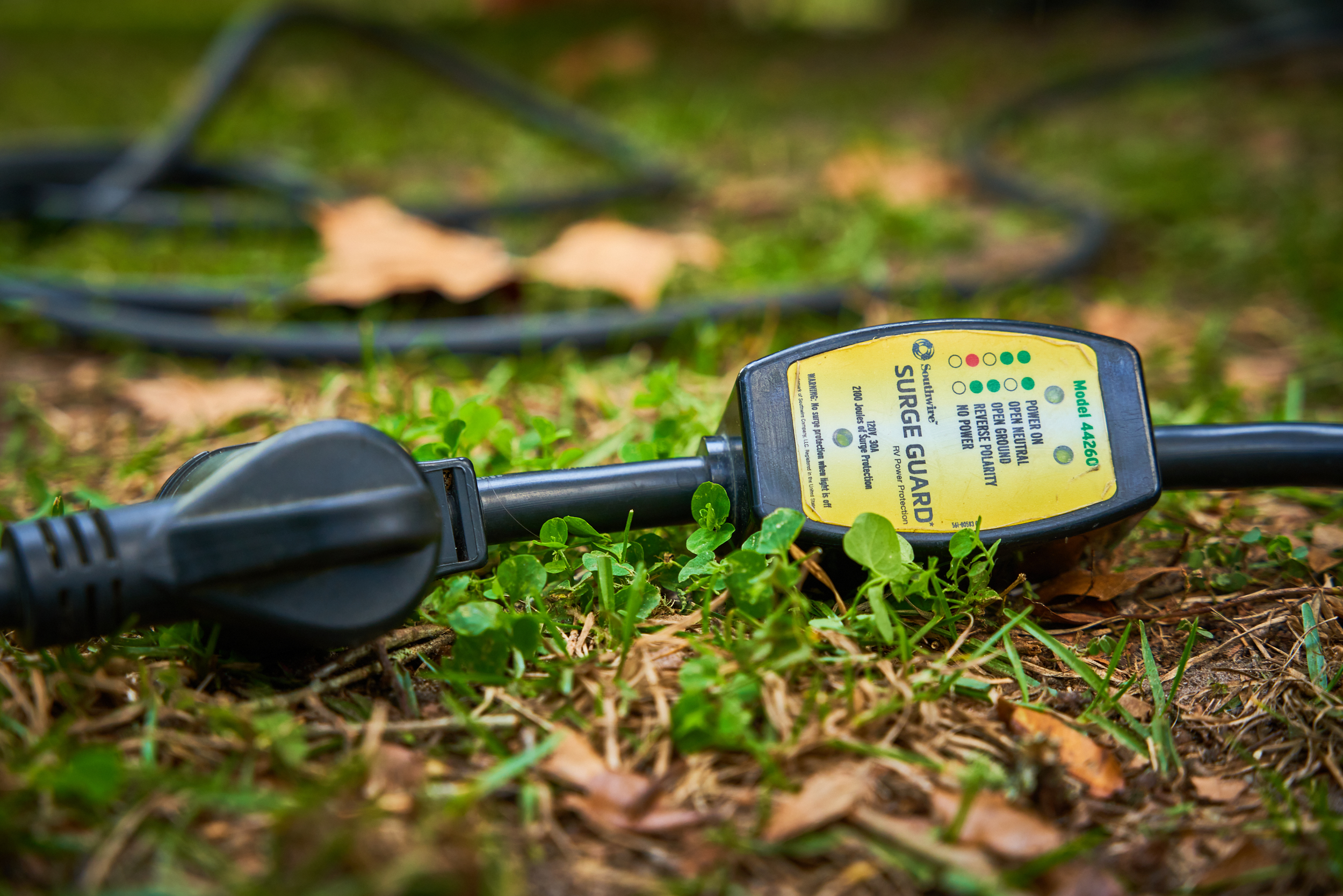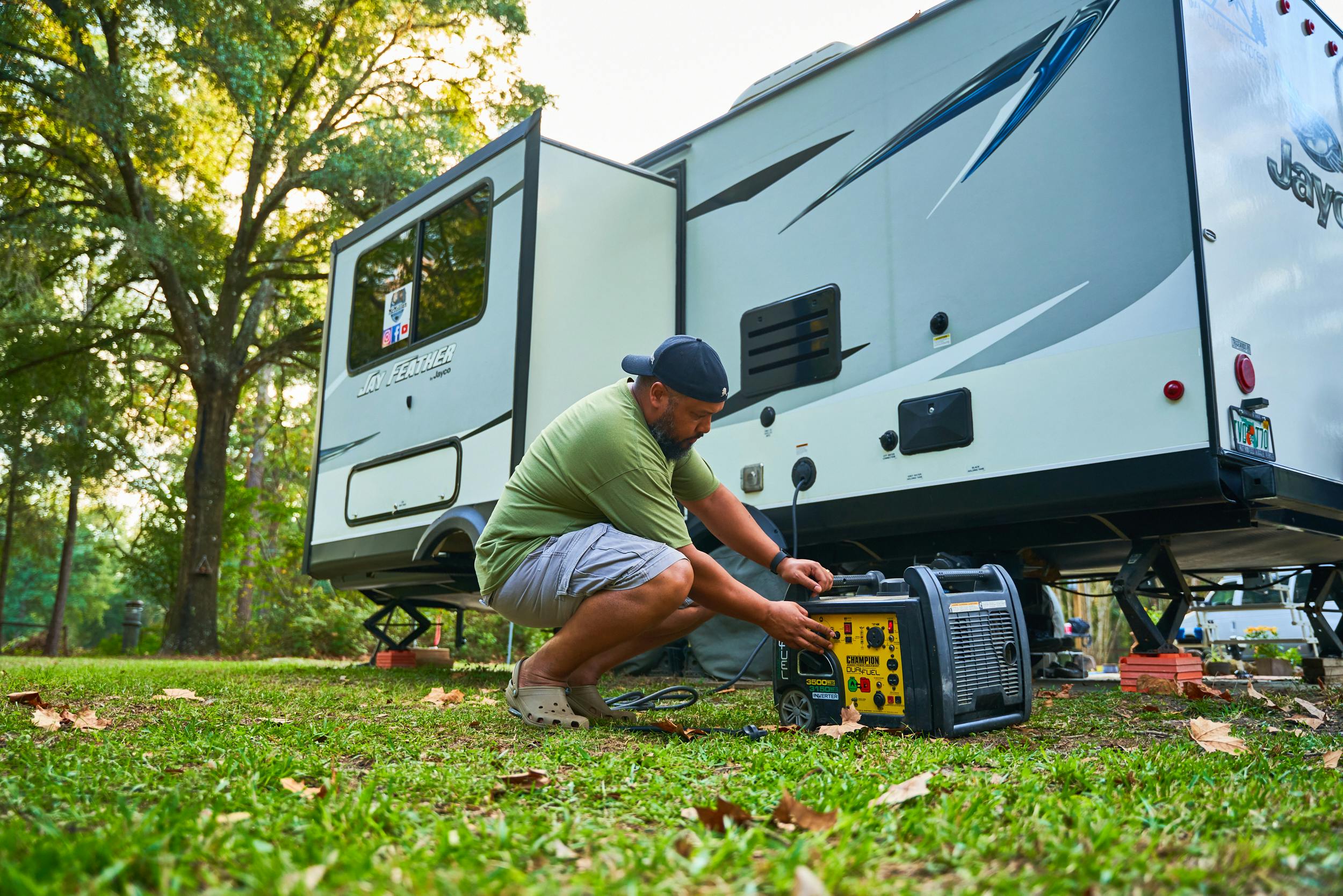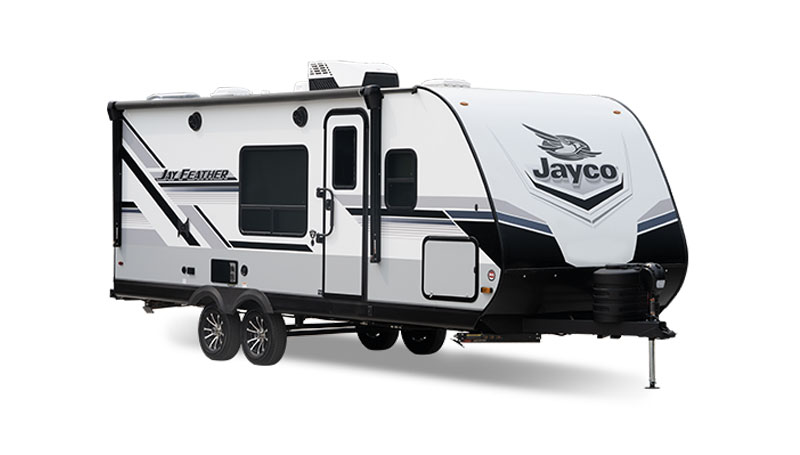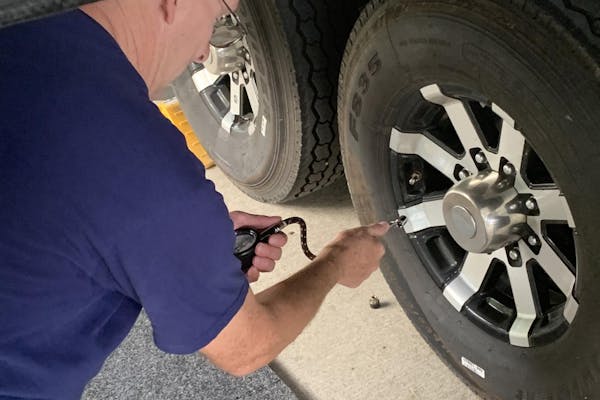30 Amp Versus 50 Amp
When you’re plugging into shore power, there are usually two types of amperage available: 30 amp and 50 amp. The amp size of an RV will vary, so it’s best to stick with whatever is issued for your specific RV. However, there are adapters you can purchase that will allow you to plug your RV into a different amperage. For example, our RV is 30 amps but we have a dogbone power adapter that allows us to plug into a 50 amp if that’s the only hook-up offered at a campground.
The overall size of your RV and its amperage will also dictate how many appliances you can run at once. For example, you may not be able to turn on your air conditioner and microwave at the same time. Always try to monitor how many appliances or devices you are using at one time, and be sure to use a surge protector.

Generators
If you have a generator, this acts just like shore power for your RV. You can plug your RV directly into the generator, turn it on and you instantly have power. Generators are measured in watts and, depending on the number of watts, you can power different things in your RV. We have a 3,500-watt generator and this allows us to run most appliances inside of your RV. Generators require gas to run, so be sure and regularly check your levels regularly.

Solar Power
Many RVers are investing in solar panels for their RVs, and some newer RV models are coming solar-equipped (meaning it’s easy to install solar panels yourself) or already have solar pre-installed. We installed solar panels on our Jayco travel trailer and it has really helped supplement our power, especially when we’re boondocking. Solar panels are responsible for recharging your house battery, which then powers your 12v system or your 120v system via an inverter. How much solar power you’ll need depends on a few different things, including how big your RV is and what appliances you plan to run. Solar panels need a significant amount of sunshine to charge and power your RV, so make sure you place them in a bright, well-lit area.

Propane
Most RVs have at least one propane tank, which is responsible for keeping your furnace warm and your refrigerator cold. Propane also provides hot water in your shower and hot burners for cooking. Propane tanks on a towable RV are typically 20 or 30 gallons, and you’ll either need to refill or exchange the tank when it gets low.
If you want to turn your RV’s furnace on, first make sure that your propane tank is full and properly connected to your RV. Then, slowly open the propane valve on your tank. Once the valve is open, you can set the thermostat in your RV to your desired temperature. It’s important to note that your RV’s furnace requires both propane and a sufficiently charged battery or a hook-up to operate.
To get your RV’s refrigerator cold, you’ll want to make sure that your refrigerator is set on the propane or automatic setting and then follow the same process with the propane tank valve. Many RVers like to turn on their refrigerators the day before a trip to give it ample time to cool down.
Propane tanks require propane to run, so be sure and check your levels before every trip (especially if you’re traveling in the colder months and running your furnace more). You should also have an RV mechanic or technician regularly check your propane lines for any possible leaks or damages.













